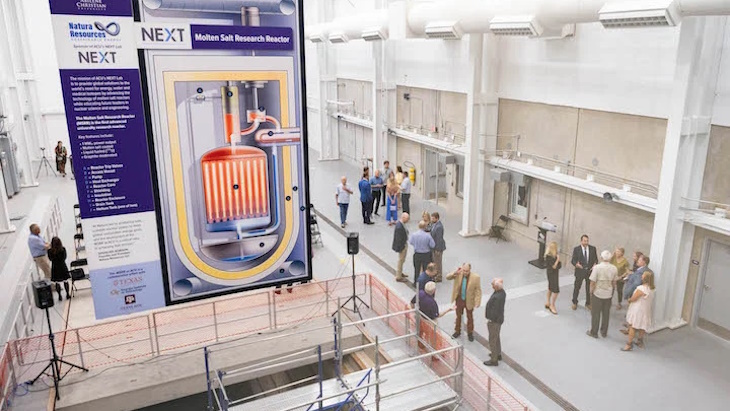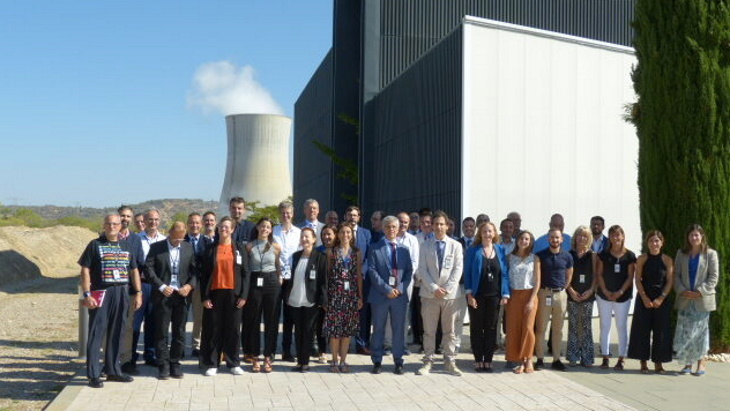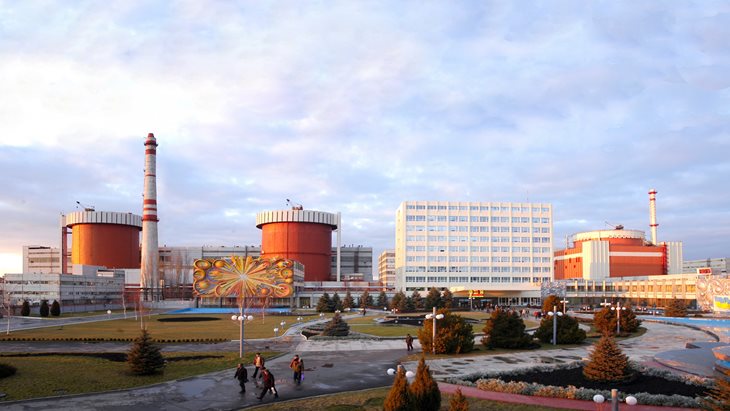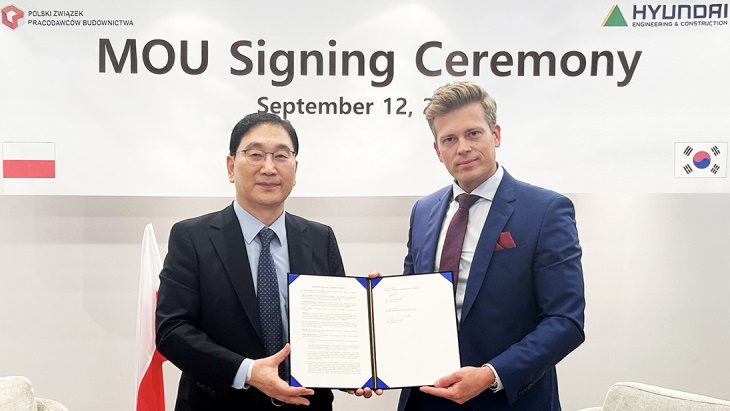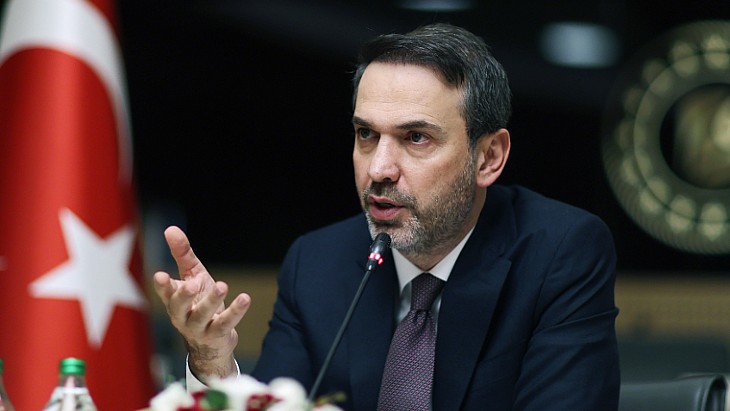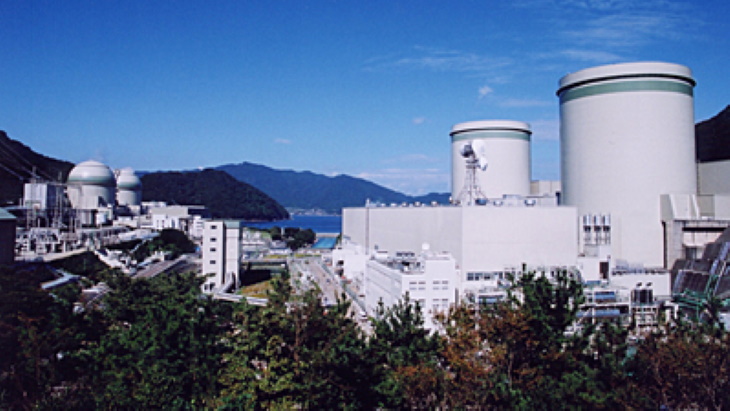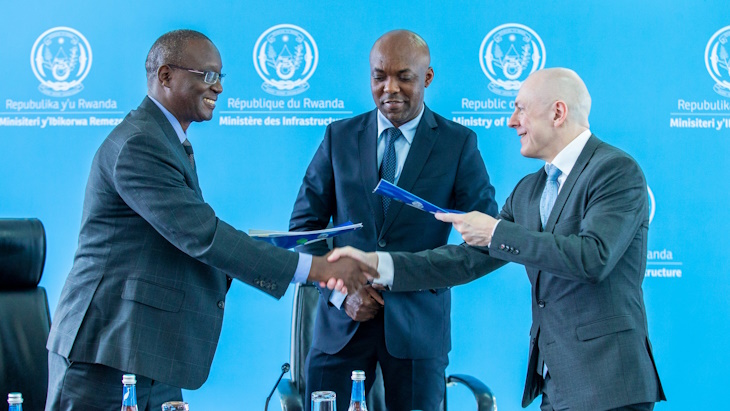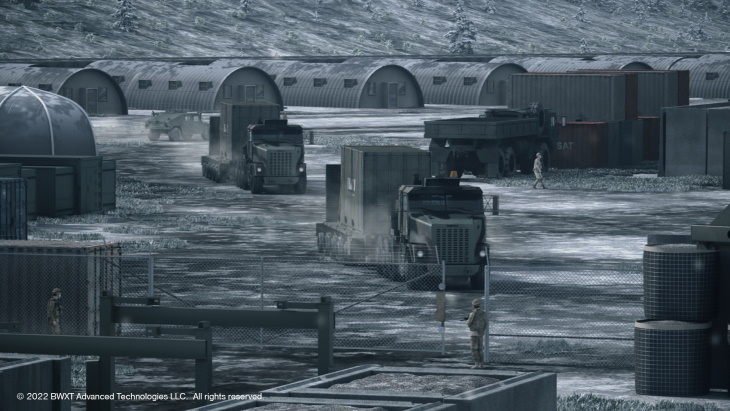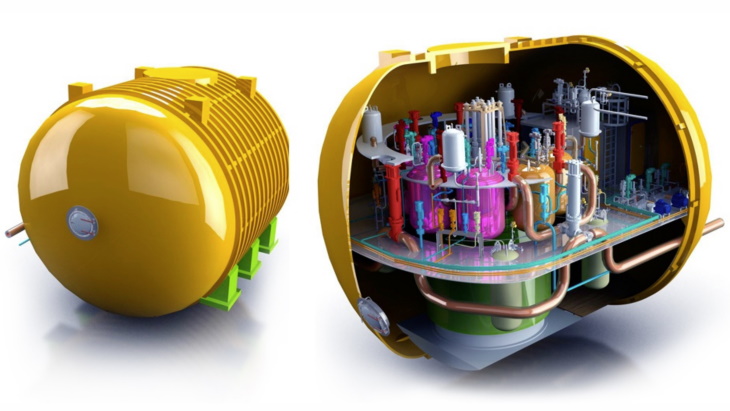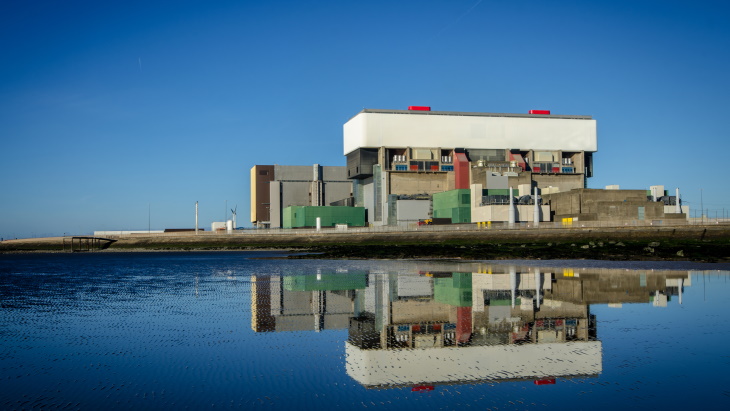Na decennia tot taboe te zijn verklaard, lijkt kernenergie weer een reële optie in Nederland. Politieke partijen die eerder tegen waren, zijn nu voor; het kabinet besloot al tot de bouw van twee nieuwe centrales. Kan nucleair de haperende energietransitie vlottrekken? En hoe dan?
Lange tijd was het onderwerp kernenergie onbespreekbaar, maar sinds de energie- en de klimaatcrisis lijkt nucleair een optie in Nederland. Het kabinet wil twee grote, nieuwe centrales bouwen, die straks een flink deel van de Nederlandse elektriciteit leveren. Ook een aanzienlijk deel van de politiek is voor. D66, jarenlang geen voorstander, ziet kernenergie nu als een van de oplossingen voor de klimaatcrisis, zei de nieuwe partijleider Rob Jetten eerder deze maand. Ook onder meer VVD, BBB, CDA, PVV, Volt en Ja21 zijn positief.
Hoewel de meeste milieubewegingen tegen zijn, zijn er ook clubs die nucleair toejuichen, zoals RePlanet, een milieuorganisatie met jongeren uit diverse Europese landen. ‘Kerncentrales zijn schoner, nemen minder ruimte in en leveren veel meer energie op’, zegt de Nederlandse vertegenwoordiger van RePlanet, Freek van der Heide.
Ontlasten stroomnet
Kerncentrales kunnen de energietransitie vooruithelpen, doordat ze werken zoals de oude kolencentrales: ze leveren heel veel elektriciteit in een constante stroom. Dat is prettig voor het stroomnet, dat eigenlijk niet is ontworpen om de enorme vloedgolven duurzame stroom van zonnepanelen en windparken te verwerken.
Door de snelle groei van zonne- en windenergie, zijn nu grote delen van het Nederlandse stroomnet overbelast. Ook wordt duurzame stroom vaak geproduceerd op plaatsen waar de vraag laag is, zoals op de Noordzee en in provincies als Drenthe en Groningen. Om al die groene stroom in goede banen te leiden, moet het elektriciteitsnet fors worden uitgebreid en verzwaard.
Dit kost geld. Veel geld: de afgelopen vier jaar is 13 miljard euro besteed aan de verzwaring van het stroom- en gasnet, waarbij de meeste euro’s gingen naar elektriciteitskabels, blijkt uit cijfers van Netbeheer Nederland. En elk jaar stijgt het bedrag. Hoogspanningsbeheerder Tennet investeert de komende tien jaar 13 miljard euro op land en 26 miljard voor de aansluiting van windparken op zee.
Volgens een rapport van PwC uit 2021 besteden netbeheerders tot 2050 102 miljard euro aan verzwaringen van het net. Dat is niet het enige, want al die kabels moeten ook worden onderhouden. De beheerkosten stijgen volgens PwC van 2,8 miljard euro per jaar nu naar 5,6 miljard in 2050. Later dit jaar komen er nieuwe budgetramingen, die volgens Netbeheer Nederland waarschijnlijk hoger zullen uitvallen.
Kan dat geld niet beter worden besteed? Bijvoorbeeld door meer uit te gaan van het bestaande net? Dit net is in ruim honderd jaar opgebouwd, waarbij kolen- en gascentrales zijn aangesloten op hoogspanningskabels, de supersnelwegen voor stroom, die vervolgens via afritten en vertakkingen eindigen in woonwijken en bij fabrieken. Vervang kolencentrales en een deel van de gascentrales door nucleaire, CO2-arme varianten en je voorkomt een groot deel van de problemen waar de energietransitie nu tegenaan loopt.
CO2-reductie
Was meer kernenergie niet veel beter geweest? Dan had het bestaande net niet halsoverkop omgebouwd hoeven te worden en was er extra tijd om geleidelijk meer wind en zon in het systeem te brengen.
‘Als je terugkijkt met de kennis van nu, was een keuze voor kernenergie verstandiger geweest’, oordeelt de Eindhovense hoogleraar energietechnologie David Smeulders. Deze energievorm is nauwelijks besproken bij het maken van plannen voor de huidige energietransitie. ‘Bij het opstellen van het Klimaatakkoord (in 2019, red.) is kernenergie expliciet uitgesloten bij de overwegingen’, zegt hij. ‘Daar is een fout gemaakt.’
Smeulders vindt dat destijds alle opties opengehouden hadden moeten worden. ‘Het doel is om de uitstoot van CO2 terug te dringen, daar doen we het voor, en dat kan met kernenergie. Dit wordt soms uit het oog verloren.’
De uitkomst van de discussie destijds had nog steeds kunnen zijn dat kernenergie te duur is, dat het afvalprobleem te groot is of dat er betere alternatieven zijn. Maar dat er nauwelijks over gesproken is, is raar, stelt de Eindhovense hoogleraar. ‘We hadden kunnen voorzien dat het stroomnet zou gaan piepen en kraken.’
Transitie mislukt?
Smeulders vreest dat we over tien jaar misschien moeten concluderen dat de transitie is mislukt. Dat we of te veel CO2 uitstoten of dat de industrie vertrokken is. ‘Dat willen we geen van beide.’ Meer nucleair in het systeem kan een oplossing zijn, vindt hij. Maar de bouw van een kerncentrale is evenmin gratis en vergt ook veel tijd. Volgens Smeulders is het daarom goed dat er meer aandacht komt voor potentiële nieuwe technologieën.
Zeker met de opkomst van zogenoemde modulaire kerncentrales (SMR’s), waarvan de standaardcomponenten grotendeels in een fabriek worden gebouwd en ter plaatse in elkaar gezet. Deze industrialisering van de bouw moet kerncentrales goedkoper maken en sneller te realiseren. Bijvoorbeeld bij het industriegebied Chemelot in Limburg. Door SMR’s te plaatsen op locaties waar veel vraag is, hoeven er nauwelijks nieuwe hoogspanningslijnen te worden aangelegd – ook een voordeel.
Maar SMR’s bestaan alleen nog maar op de tekentafel. Optimisten denken dat ze binnen zeven jaar beschikbaar zijn, maar de Eindhovense hoogleraar twijfelt. ‘Tel daar maar minstens drie jaar bij. Maar ik denk dat kerncentrales desondanks een van de opties zijn om de problemen met de transitie op te lossen.’
Nucleair is duur
Niet iedereen is het hiermee eens. Adviesbureau CE Delft heeft in 2020 een inventarisatie gemaakt van het effect van een groot aandeel nucleair op het energiesysteem. De kosten van zo’n systeem zijn volgens CE Delft hoger: ruim 14 miljard euro per jaar, uitgaande van een ‘optimistische kostenraming’ voor de bouw van de kerncentrales.
Een andere optie is nauwelijks meer nucleair, en een maximale inzet van zon en wind, ongeveer zoals nu gebeurt. In dit scenario is naar schatting van CE Delft 17 gigawatt aan wind en 27 gigawatt aan zonvermogen nodig. Hiermee redt Nederland het niet en is aanvullend 25 gigawatt aan CO2-vrije energiecentrales nodig, om ervoor te zorgen dat het land niet zonder elektriciteit komt te zitten op momenten dat er geen wind en zon is, en er toch veel stroom wordt verbruikt, zoals op sommige momenten in de winter. De totale kosten van dit systeem komen volgens CE Delft uit op bijna 12 miljard euro per jaar. Flink goedkoper dus.
Nucleair is duur, zegt ook Patrick van de Rijt, hoofd marktanalyse bij hoogspanningsbeheerder Tennet. Bovendien bestaat het risico dat zon en wind nieuwe kerncentrales straks uit de markt drukken. Groene stroom is per kilowattuur immers goedkoper dan nucleaire, zelfs als alle investeringen in netwerkkabels worden meegenomen, aldus de Tennet-expert. Doordat er steeds meer groene stroom komt, is er in de markt minder plaats voor nucleair, dat vaak niet kan concurreren op prijs.
‘Er komt dus druk te staan op het aantal uren dat een kerncentrale kan leveren’, zegt Van de Rijt. Doordat de vaste kosten van een kerncentrale hoog zijn (vooral vanwege de dure bouw), wordt een centrale al snel onrendabel als deze niet 24 uur per dag kan leveren.
Dunkelflaute
Maar wind en zon kunnen dat ook niet. ’s Nachts is er bijvoorbeeld geen zonne-energie, en als het niet waait, is er ook geen windenergie. Kerncentrales kunnen in dit gat springen. Van de Rijt twijfelt of dit straks vaak gebeurt, omdat er over enkele jaren heel veel grote accu’s zijn verbonden met het stroomnet. Die absorberen overdag overschotten zonnestroom en leveren die af als de zon is ondergegaan. Van de Rijt denkt dat er straks zoveel accu’s zijn, dat de nacht (als de energievraag lager is) overbrugd kan worden. Dit betekent dat nucleair ook ’s nachts vaak geen rol van betekenis kan spelen.
In een elektriciteitssysteem met veel wind en zon zijn kerncentrales alleen nodig tijdens bijvoorbeeld een zogenoemde dunkelflaute, een langere periode in de winter waarin er geen zon en wind is. Maar dat gebeurt niet vaak, zegt Van de Rijt. En er zijn andere manieren om zo’n periode te overbruggen. Als elektriciteit schaars is, zal de prijs omhoogschieten. Dan kan het voor sommige grootverbruikers lonend zijn de productie even stil te leggen. Dit ‘afschakelen’ is een relatief goedkope optie. ‘Ik eet ook geen aardbeien met Kerstmis’, zegt Van de Rijt. ‘Het kan wel, maar het is duur.’
Marktwerking is mooi, maar komt de rekening nu niet te veel bij de industrie te liggen, die immers een deel van het geld verdient waarmee de transitie betaald moet worden? Dit valt volgens de Tennet-expert mee. Op andere momenten kan de industrie namelijk profiteren van lagere stroomprijzen. Afnemers zullen af en toe op hun handen moeten zitten als de prijs flink omhooggaat, zegt Van de Rijt. ‘Komende jaren moeten we even stalen zenuwen hebben.’
Gammel schip
Een bezwaar dat vaak genoemd wordt in de discussie over nucleair is dat kernenergie weliswaar CO2-arm is, maar niet duurzaam, vanwege het afval en de beperkte hoeveelheid brandstofreserves. Smeulders is van mening dat dit duurzaamheidsargument een semantische discussie is. ‘Ik vind: duurzaam is minder CO2.’
Hij ziet nog een voordeel: kernenergie levert veel restwarmte op, die in warmtenetten gebruikt kan worden voor verwarming van gebouwen en bij industriële processen. ‘De helft van de energie die we verbruiken, is warmte, dat wordt weleens onderschat. Nu wordt die bijna allemaal geloosd. SMR’s kunnen prima warmte leveren aan lokale netten.’
Ook de discussie over de vraag of nucleair duur is of niet, zegt de hoogleraar niet zo veel. ‘Ik kan een gedegen rapport schrijven waarbij het duurder is, en net zo’n gedegen rapport waarbij kernenergie goedkoper is.’
Nu veel bestaande energiecentrales worden uitgeschakeld en vervangen door wispelturiger wind en zon, bouwen we een schip zonder ballast, vindt Smeulders. ‘Het moet wel overeind blijven, je hebt onderin de romp ballast nodig. Die komt van traditionele centrales en dus ook van kernenergie.’
Van de Rijt van Tennet ziet dat anders. ‘Nucleair levert baseload, een constante hoeveelheid elektriciteit die altijd beschikbaar is’, zegt hij. Dat is vooral prettig voor de zware industrie, die graag 24 uur per dag op vol vermogen draait. ‘Als je voor nucleair bent, bedrijf je in feite industriepolitiek, want die bevoordeel je met veel baseload.’
Waterstof
Binnen deze discussie bestaat nog een onzekere factor: de rol die elektrolysers straks gaan spelen in het energiesysteem. Elektrolysers kunnen waterstof maken uit water en elektriciteit. Ze kunnen volop draaien als er een teveel aan groene stroom is. Die waterstof kan op een later moment, als er een tekort aan groene stroom is, worden gebruikt om bijvoorbeeld gascentrales op te laten draaien. Dit is ook een dure optie, want groene waterstof is schreeuwend duur. Maar vermoedelijk is ze goedkoper dan het gebruik van kernenergie, aldus de marktexpert van Tennet.
Voorstanders van kerncentrales noemen nog een voordeel: ze kunnen dankzij hun restwarmte efficiënt waterstof produceren. Al is niet zeker of de import per schip uiteindelijk niet goedkoper is.
Veel is dus nog onzeker. Smeulders vindt dat haast geboden is. Laten we stoppen met rapporten schrijven, zegt hij. ‘Laten we gaan bouwen.’ Als je naar CO2 kijkt, moet je gewoon je boerenverstand volgen, vindt hij. Dat betekent diversificeren. ‘Kernenergie is een deel van de oplossing. Laten we wat minder ambitieus zijn met wind en zon, en wat ambitieuzer met nucleair.’

